Business
Chennai Metro Rail: Miles To Go To Realise Its Potential; Its Chief Says Effective Measures Are Being Taken
M R Subramani
Jul 31, 2019, 03:24 PM | Updated 03:24 PM IST
Save & read from anywhere!
Bookmark stories for easy access on any device or the Swarajya app.
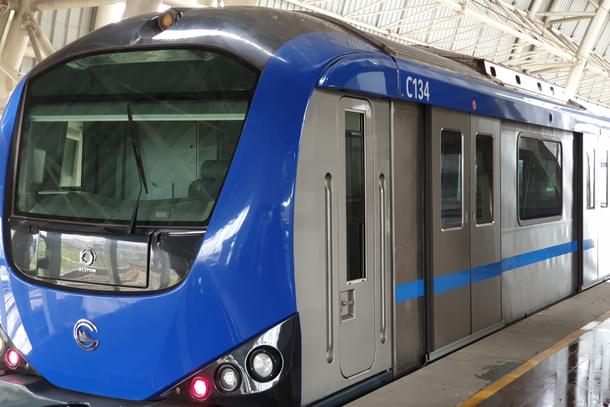
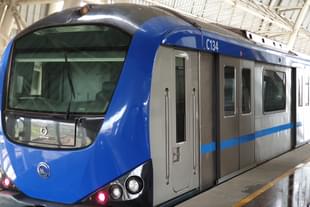
When Prime Minister Narendra Modi inaugurated the Chennai Metro Rail service from Washermanpet to the Airport, called the Blue Line, on 11 February this year, many of those employed on Chennai’s arterial Anna Salai were very happy. The service promised them a quicker travel to their office, particularly those coming from suburbs like Pallavaram, Porur or Nandambakkam.
Already, the Chennai Metro Rail Limited (CMRL) service from the Chennai MGR Central station to the Airport station — the Green Line via central areas of the city like Shenoy Nagar and Anna Nagar — was serving those working at IT parks in Ekkaduthangal or Guindy Industrial Estate. For instance, employees working in a media company on Anna Salai and living in suburbs like Porur, Nandambakkam or Pallavaram travel up to Guindy and then take the Chennai Metro Blue Line service to their office on Anna Salai.
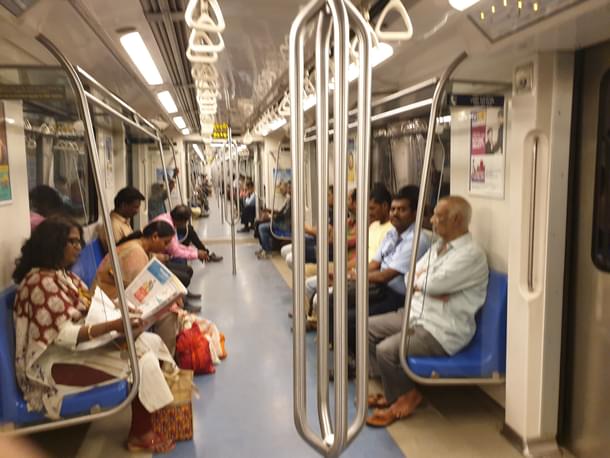
“From Guindy, it took 45 minutes by bus to our office. Now, it takes less than 15 minutes and travel is cool,” says an employee of the media firm, pointing out that many of his colleagues, too, take the service that is convenient now.
Jagadeesh K, a physio-therapist, goes to Chennai airport from Thirumangalam near Anna Nagar every month, taking the Green Line service to receive his brother from abroad. Earlier, he took a bus that would take nearly an hour. These days, he takes the metro service that reaches the airport in 20 minutes.
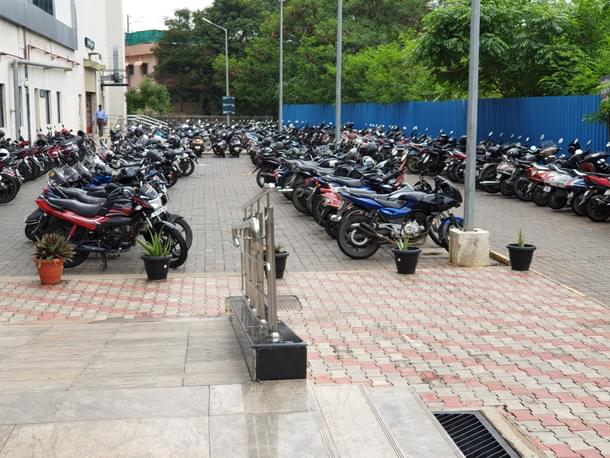
At Alandur, an employee manning the parking lot for metro users is kept on his toes during the peak hours between 8-10am and 5-7pm. This employee has witnessed a surge in parking vehicles at the Alandur metro station since February when the Washermanpet-Airport Blue Line service began.
“Before the Blue Line service began, nearly 300 two-wheelers and some 100 four-wheelers used to be parked here. Now, some 750 two-wheelers and over 300 four-wheelers are being parked daily. Besides, 400 people have taken monthly passes to park their two-wheelers now against some 250 six months ago,” says the employee.
At the Koyambedu metro station too, the employee at the parking lot says there is a marked rise in the number of users. In the last few months, the number of two-wheelers being parked there has increased to 400 from around 250, while for cars it has increased to over 175 from around 100 earlier.
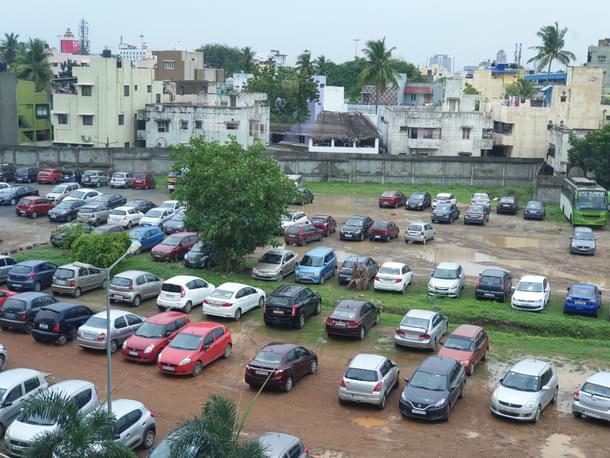
“CMRL commenced its inaugural service on 29 June 2015 from Koyambedu to Alandur for a distance of 10 kms with an average footfall of 10,000 per day. Within a span of less than four years, CMRL has completed the entire 45 kms stretch of Phase-1 with a footfall of one lakh on an average,” says Pankaj Kumar Bansal, the managing director of CMRL.
The Washermanpet – Airport service is the first of its kind in Chennai connecting the airport through one of the arterial roads (Anna Salai) for which no train service access was previously available. It also connects both the Chennai MGR Central station and the Airport station between which there is no rail connectivity for those living in these parts of Chennai, says Bansal, adding that CMRL expects the footfalls to increase.
Despite its growing popularity among the people of Chennai, the Metro Rail is being seen as one whose potential hasn’t been tapped. “The bus fare from Guindy to Simpson on Anna Sali in a deluxe Metro Transport Corporation bus is Rs 18. The Metro Rail fare is Rs 36 if I use the card where I pre-pay and get a 10 per cent discount every time I travel. A call taxi fare is around Rs 130. Still, I feel Chennai Metro can reduce its ticket fare by at least Rs 10,” says an employee of the media firm.
Jagadeesh uses the Chennai Metro only to receive his brother from the airport. On the return journey to the Airport, he and his brother hire a call taxi. “There are some difficulties that Chennai Metro needs to address. We cannot lift heavy suitcases and put them in the conveyor for a scan at the metro stations. The scan machine conveyors need to be user-friendly like the ones at airports,” he says.
Chennai Metro also needs to run more services between 11pm and 4am since most of the international flights take off from Chennai then. “Chennai Metro Rail can operate at least one service every half an hour between Airport and Koyambedu stations and also between Airport and Chennai MGR Central stations between 11pm and 4am,” says Jagadeesh.
Currently, the Metro Rail corporation operates services between 4am and 11pm with a train operating every seven minutes during peak hours on the Blue Line and every 10 minutes on the Green Line during peak hours.
During lean hours, the Blue Line service still operates every seven minutes, while the Green Line service operates every 14 minutes. Again between 4am and 6.30am and after 10pm, the Chennai Metro service operates at an interval of 30 minutes on both lines. On Sundays and holidays, the service is run between 8am and 10pm.
The Chennai Metro Rail corporation has the participation of the central and state governments. During 2017-18, the rail corporation made a loss of Rs 229.64 crore before tax — more than double the loss of Rs 93.94 crore it made during 2016-17. Accounts for 2018-19 are not available yet.
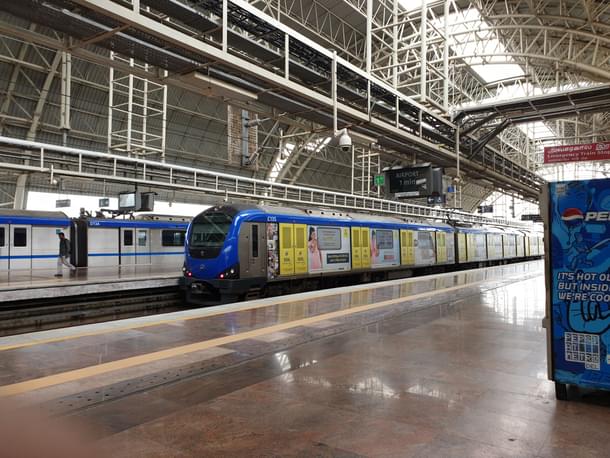
There are many in Chennai who feel that the Metro Rail has overpriced ticket rates. Though compared with call taxis and auto rickshaws they are cheap, the fares are high when compared with either share auto or bus fares. Then again, many in Chennai prefer to use their own two-wheeler or four-wheeler for last-mile connectivity. Currently, every second person you come across in Chennai owns a two-wheeler, according to a Times of India report.
“Share autos are one reason why Chennai Metro Rail isn’t getting its numbers. You can board a share auto anywhere and get down anywhere and the fares are affordable. In addition, Chennai has a variety of transport options and they seem to tell on Chennai Metro Rail ridership,” says C Ramasubramanian, who commutes to Ekkaduthangal every day.
Chennai Metro was projected to carry 7.76 lakh commuters a day but actually only around one lakh use the services. Chennai Metro is also handicapped by inadequate last-mile connectivity though the corporation has been trying to address this issue. Metro Transport Corporation does not ply its buses to metro stations from some localities.
Though the Tamil Nadu government operates mini buses, few services link commuters’ residences to the nearest metro stations. Lack of funds and revenue loss are cited by the Metro Transport Corporation for the tardy progress in helping the Metro Rail corporation with last-mile connectivity.
“There are other issues like parking facilities. For instance, when I drove to Koyambedu from Avadi and tried to park my car there, the people manning the facilities said there was no space on a day when it had rained in the morning,” says a commuter who drives his four-wheeler from Avadi to Koyambedu and then takes the metro to Nandanam.
“When I questioned them pointing out vacant spots, the parking lot staff tell me that they become slushy during heavy rainfall and they didn’t want to take the risk of being shouted at by commuters if more showers followed during the day. Poor maintenance of its properties is hurting the corporation,” the Avadi commuter said.
Bansal says CMRL has taken up several initiatives to address the first- and last-mile connectivity issues through operation of feeder share auto, electric auto, shared cab, and maxi-cab services at select metro stations. “At present, CMRL is working towards introducing app-based dedicated feeder service for all metro stations. CMRL is also collaborating with leading IT firms and is operating dedicated feeder services for them,” he says.
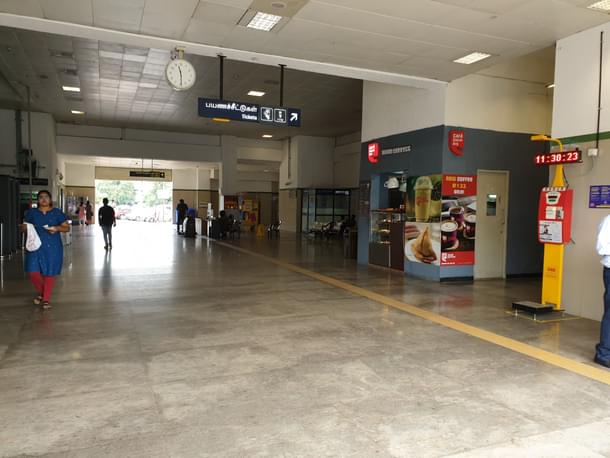
Ramasubramanian says there are other ways through which the Metro Rail corporation can increase its revenue. Bansal says CMRL is working on increasing non-fare revenue by letting out spaces in the stations for ATM kiosks, etc., and developing the property for rentals through public-private partnerships (PPPs).
“At present, CMRL is utilising 10 per cent of its energy demand from solar plants. It is planned to increase it upto 75 per cent. This will reduce the energy expenditure of CMRL considerably,” adds the Metro Rail managing director.
These efforts seem to be implemented as the Chennai Metro has let out its space for commercial outlets at the Alandur station and at the entrance of Ashok Nagar station. “CMRL has already been licensing kiosk and retail spaces inside and outside the metro stations within the CMRL premises,” says Bansal.
Chennai Metro Rail faces other problems like technical snags and internal issues besides incomplete work at some stations. “There are still metro stations where you see construction work going on. You can’t access the stations from all directions,” says a commuter at Thirumangalam station.
“Quite often, we find the metro rail stranded before the Airport station for a few minutes. This summer, we found the underground stations hot as the air conditioner did not work,” says K Dinakar, a private-firm employee travelling daily from the Airport to the LIC stop. In May this year, the Metro Rail corporation switched off the air conditioners in its underground stations due to water shortage.
Bansal agrees that there are glitches in the signal system. “Five minor software glitches, which caused occasional disturbances, have been identified. This requires correction and update in the software that is being taken up by the signalling contractor. It will take three months to test under different scenarios and validate,” he clarifies.
The recent employee unrest in the Chennai Metro Rail corporation has also dented its image. During the unrest, a couple of unruly employees tampered with the signaling system, leaving commuters stranded for hours. The employees responsible for creating the problems were subsequently suspended.
“CMRL employees went on a flash strike on 29 April. Immediately, CMRL executives, employees and outsourced staff took over the operations. They effectively managed for three days and carried 2.2 lakh passengers fetching Rs 85 lakh as revenue,” Bansal says.
CMRL has already outsourced full train operations, some station controllers and full operation and maintenance. It is monitored by the CMRL executives to maintain quality and minimise failures. CMRL will further outsource traffic controllers, depot controllers and rolling-stock maintenance controllers, thereby improving the system.
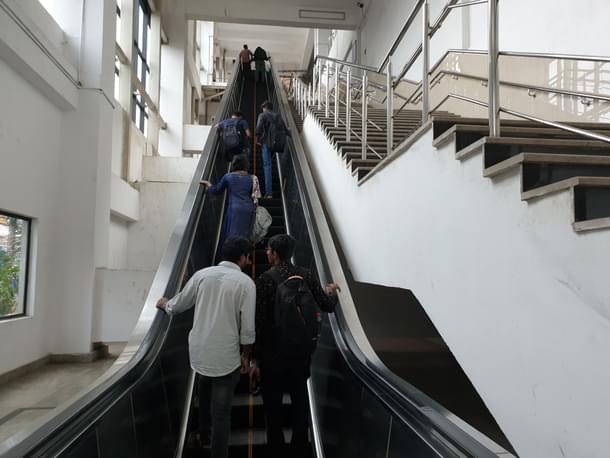
The Chennai Metro Rail is seen as a mode of transport that can be handy for the people of the city in various ways. But critics say CMRL hasn’t tried to tap its potential fully.
Bansal assures that CMRL is doing everything to tap its potential. The Metro Rail corporation will further scale up its services. “In order to attract more commuters, CMRL has already implemented various promotional measures such as fare discount for regular users, group ticketing, tourist card, etc,” he says.
CMRL is now working with the Greater Chennai Corporation, Chennai Metropolitan Development Authority and Metro Transport Corporation to provide various infrastructure improvements like station access roads, footpath improvements and relocation of bus stops to be near metro entry/exit points, adds Bansal.
What makes CMRL an optimised venture is that it is the first metro rail in the country to provide multi-modal integration from the design stage itself. It is also the first in India to outsource the operations and maintenance services that helped the corporation tackle the flash strike by the employees effectively.
CMRL has also optimised the construction of underground and elevated stations to reduce the cost and time substantially by up to 30 per cent. All these measures are expected to help the Chennai Metro Rail realise its full potential, soon.
M.R. Subramani is Executive Editor, Swarajya. He tweets @mrsubramani





